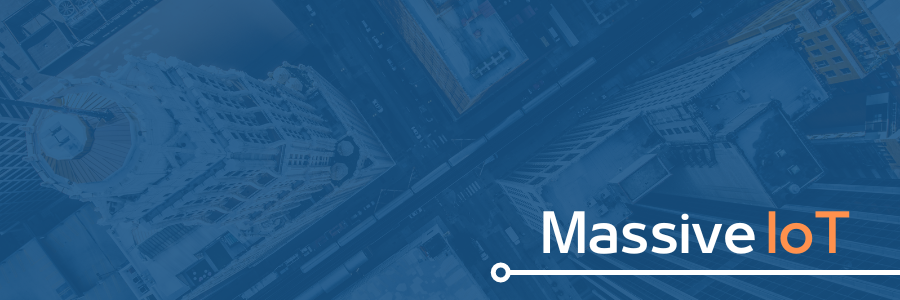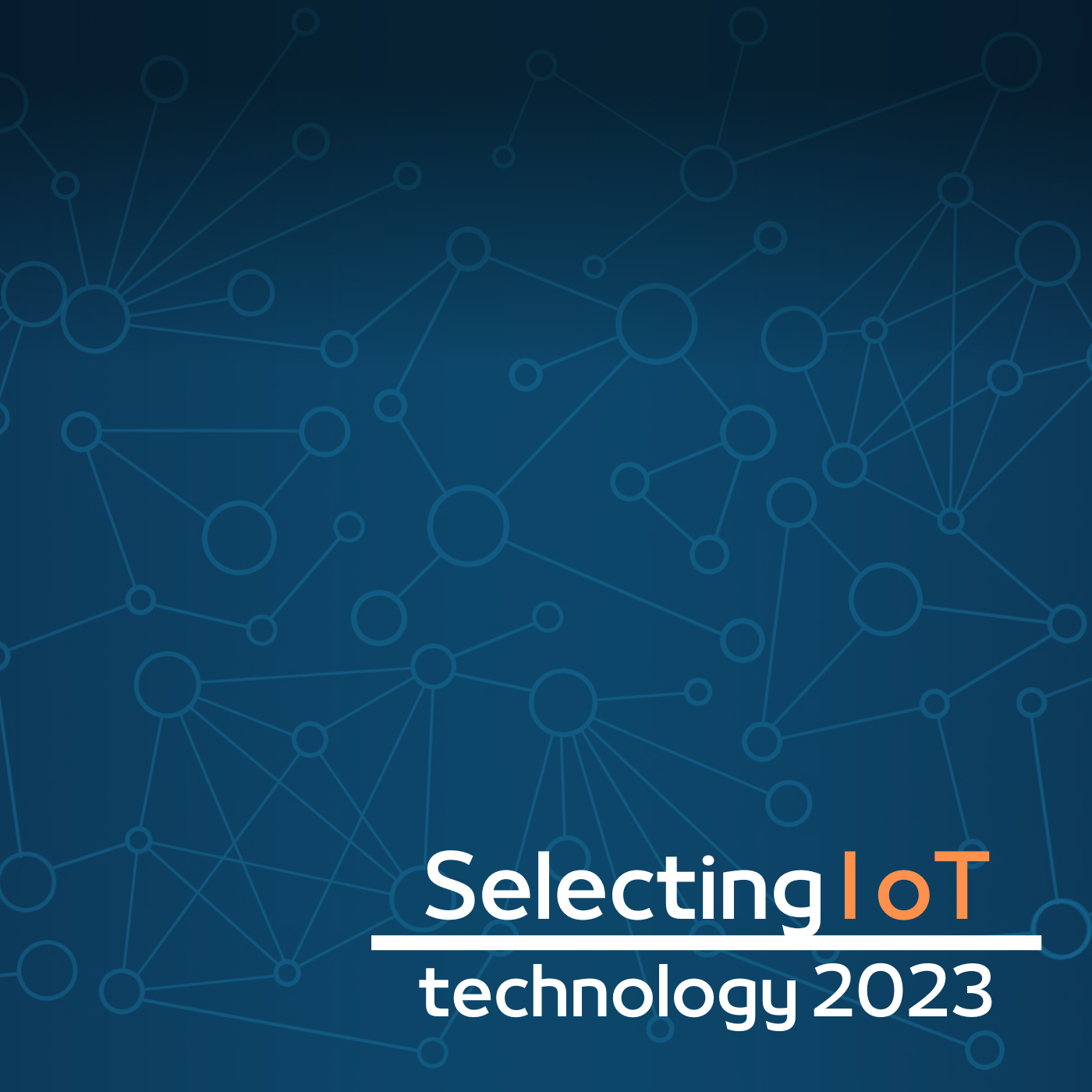Digitalisation, or digital transformation, is a term we’ve heard about in recent years. IoT, the Internet of Things, is one of many enabling technologies. Digital transformation is often a technical exercise, but to be successful, the transformation must demonstrate business value. Business benefits aside, in this article, we’ll focus on what you need to know about available technologies on the market if you’re going to use IoT for digitisation in 2023.
When IoT is used for digital transformation, it can lead to better decisions thanks to data from IoT devices. IoT devices are often using wireless technologies to attach to the internet. There are many wireless communication technologies, so the landscape can sometimes be challenging when choosing technology.
IoT can mean different things
The Internet of Things is a broad term encompassing things connected to the internet. It is not a disruptive technology consisting of a single solution but rather a term for several solutions. Many people think of large sensor networks when they hear about massive IoT. I tend to describe massive IoT as wanting to solve three basic needs:
- measure some data (sensors)
- control something (actuators)
- position something (tracking devices like trackers)

Massive IoT or LPWAN?
Every connected device typically has two interfaces: the radio and the other is what is connected to the device. For massive IoT, one interface is, for example, a sensor, as described above. The other interface, the radio interface, consists of different technologies for LPWAN or Low Power Wide Area Networks. LPWAN is not a technology standard but a group of wireless technologies that use low power but have a large coverage area.
So what technologies are available for LPWAN and can be purchased over the counter in the first half of 2023?
Proprietary network infrastructure
Let’s first look at technologies where you have to build the network infrastructure yourself. Here we find two candidates, Mioty and 5G NR+ (unless you are an operator, of course, there are several choices). These technologies are mainly interesting for projects with a physically limited area if you want to build the infrastructure yourself. Anything else would entail high additional costs due to infrastructure and personnel.
Mioty
The technology: Mioty is a relatively new technology for free frequencies; in Europe, it uses the 868 MHz band, which is license-free. Mioty uses a bandwidth of 200 kHz for two channels. The distinguishing feature of the technology is that it uses efficient channel coding. Mioty uses telegram splitting multiple access (TSMA), which breaks data into several sub-packets and adds error-correcting codes. This makes the transmission robust against interference and packet collisions. Because it creates little self-interference, the system can simultaneously support up to one million transmitters.
For whom: If you want to take advantage of free bands, have identified performance issues with LoRaWAN and want to build your own infrastructure, then Mioty could be for you. On paper, a technology with significantly better performance but a limited hardware offering. So choosing Mioty is a balancing act; if there is available hardware for what you want, it may be an exciting option; if not, look at LoRaWAN.
5G NR+
Technology: DECT NR+ 5G is characterised by the fact that it is a technology that does not need any actual infrastructure, i.e. no base stations; it is instead built to be decentralised. NR+ is based on MESH technology. DECT NR+ 5G aspires to be future-proof and supports channel widths from 1.728 MHz up to 220 MHz, which should cover the market’s current and future data rate and latency needs. In this case, the 1.9 GHZ band is used, while the NR+ standard covers 17 bands in the frequency band up to 6 GHz.
For whom: NR+ aspires to be a democratised 5G standard with a low investment cost. Ideal for smart cities, electricity and water meters and industrial networks. This standard could be a hit. The standard is set, but hardware is slowly becoming available. Nordic Semiconductor is working on chips, and they are already starting with smart electricity meters, while the mass market is coming in the fall of 2023. Initially, you won’t find NR+ over the counter, in other words.

Own network and operator-managed networks?
One technology allows you to build your own network or choose an operator, namely LoRaWAN. There are two, but for LPWAN, it is LoRaWAN that applies. 5G is available for private networks, but on the bands allocated in Sweden, N86, there is no hardware for LPWAN.
LoRaWAN
The technology: LoRaWAN enables narrowband transmission over shorter and longer distances. LoRaWAN can transmit long distances with low power output, which keeps power consumption low. To benefit from LoRaWAN, data volumes should be minimal. The longer the distance from the base station, the greater the power consumption, just as with NB-IoT or CAT-M1. LoRaWAN has been endowed with the novelty of Relay, which, when made available, allows LoRaWAN to cover greater distances than before or to keep power consumption down at long distances.
For whom: LoRaWAN is a flexible standard suitable for those who want to build their own networks or use public networks. There are many areas where LoRaWAN is strong. Indoor automation in professional buildings, proptech, farming or agritech is two strong areas. But also municipal companies have built LoRaWAN networks to offer businesses to test IoT. On top of that, several LoRaWAN operators are offering ready-made networks. Unlike a 5G operator, these operators do not own their spectrum, which means they can’t make any guarantees around the availability of the spectrum band, a downside if you’re looking for reliability.
Operator-based networks
If you want to hand over network responsibility to an operator, in addition to LoRaWAN, there are two technologies for massive IoT with an operator running the network, Sigfox and 5G.
Sigfox
The technology: like LoRaWAN, SigFox, relies on the free frequencies of 868 MHz. SigFox is a narrowband (ultra-narrowband) technology that divides the spectrum into narrow chunks for transmitting and receiving data. This allows the receiver to use a limited spectrum piece and eliminate the noise effect. Each message is only 12 bytes to increase robustness against other transmitters on the same channel. An operator runs SigFox networks, so you can’t build your private network.
For whom: Sigfox is aimed at the same type of customers as LoRaWAN via operator-based setups. Sigfox went bankrupt a year ago and had new owners, UnaBiz. UnaBiz has raised around $60 million in funding. My tip around Sigfox is to wait and see how it develops business-wise. LoRaWAN or NB-IoT are the technologies you should look at in 2023; Sigfox is an uncertain card.
5G technologies
NB-IoT and LTE-CAT-M1 are 3GPP standards and are part of both 4G and 5G. They use cellular connectivity on a licensed radio spectrum owned by an operator. These solutions offer security and minimal risk of interference from other systems. Time and frequency synchronisation and handshaking are used to avoid collisions caused by other transmissions. These are mechanisms that significantly improve scalability. Both technologies support battery-saving features such as Power Save Mode and other power-saving mechanisms.
NB-IoT
Technology: Narrowband IoT (NB-IoT) is characterised by good indoor coverage, low cost, long battery life, and support for large numbers of devices per base station. The disadvantages of NB-IoT are high latency and low data rate, maximum of 127 kbit/s (as of release 14). NB-IoT supports handover between base stations, but the standard is intended for something other than mobile applications. NB-IoT has three power modes depending on the distance to the base station. NB-IoT comes in two iterations, typically called NB1 and NB2. Most networks and the vast majority of hardware on the market support NB1, and NB2 has potentially lower power consumption and better support for handover between base stations.
For whom: NB-IoT is less flexible than LTE CAT-M1. NB-IoT is suitable for smart meters and other applications with small data packets and the need for longer battery life. In Sweden, there is a limited number of operators running NB networks. Telia has had an NB-IoT network up and running for some years. Tele2 and Telenor will launch in 2023, but we are still determining when exactly during the year. 2023 is the year when NB-IoT gets a serious foothold in Sweden.
LTE-M
Technology: unlike NB-IoT, LTE-M supports roaming and higher data rates. LTE-M supports speeds of up to 4 Mbps with a latency of 50 to 100 ms. Some argue that this technology is more energy-intensive than NB-IoT, but many tests show that LTE CAT-M1 is more energy efficient in situations with better coverage.
For whom: LTE-M1 is a flexible standard that is well-proven and deployed. The benefits of higher data rates make it possible to perform security updates of devices, which is possible but inappropriate with other standards. As far as LTE CAT-M1 networks are concerned in Sweden, Telenor, Tele2 and Telia have networks up and running. Tre has the service up and running but will update the technology in 2023. CAT-M1 has a good foothold in Sweden.
Conclusion:
All the technologies are suitable for controlling, measuring or tracking things. They have different characteristics, so it is more complex to say that one standard is ideal for a particular application. You should ask yourself several questions, but don’t choose from the heart or listen to the self-pronounced expert in your network; select a standard that is the right business fit for your organisation. Also, beware of the claim, “this hardware has a ten-year battery life” instead, ask what its consumption is at different distances from the base station; it is likely to differ by a factor of 4 between the best and worst value.
In the future, we will see new challengers from satellite connectivity, particularly LoRaWAN and 5G devices. But if you will act in 2023, then this is not something to look at right now.
This article was writtten as an expert article for Elektroniktidningen

